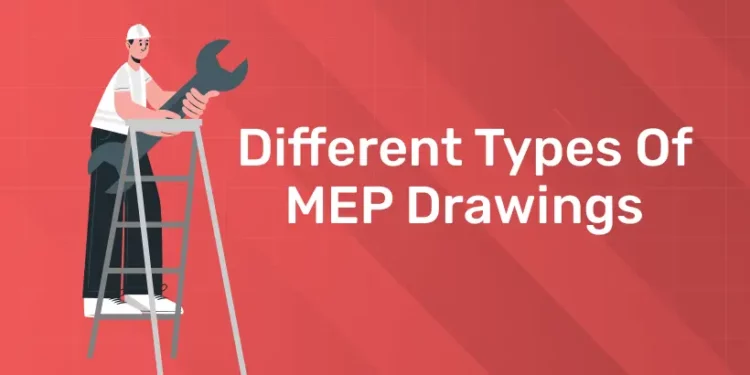Table of Contents
MEP drawings are a branch of civil engineering used in the construction business that concentrates on creating structures that are safe, functional, and energy-efficient. The mechanical, electrical, and plumbing (MEP) systems are what support building projects and are commonly referred to as such. MEP’s Mechanical division focuses on HVAC systems (heating, ventilation, and air conditioning), Electrical division handles power supply and Plumbing division handles water supply and wastewater disposal. These drawings are primarily prepared using AutoCAD, CADDUCT, Revit MEP, Autodesk Inventor, and CAD PIPE. In this article we are listing out different types of MEP drawings.
Get Career oriented MEP training with Expert Mentors! Get Free Demo Here!
Different Types Of MEP Drawings
- Penetration Drawing
- MEP Shop Drawing Detailing
- Pipe Spool Drawing
- As-built Drawing
- Coordination Drawing
- Block-out and Sleeve Drawing
Penetration Drawing
These drawings are intended for penetrants, or mechanical, electrical, plumbing, and structural objects such cable trays, pipes, ducting, electrical conduits, and electrical cables that pass through openings in walls or floors. Since apertures create a space between surrounding materials and penetrations, they must all be sized precisely. As a result, before these tasks are completed, team members’ communication is crucial to ensuring correct opening sizing. Once the penetration works within the building are completed, any alterations to these plans will not be implemented. In order to reduce the possibility of mistakes, these drawings must be thoroughly approved and cleared.
MEP Shop Drawing Detailing
Measurement, elevation, and annotation are accomplished in this way. They are made prior to the start of a project’s building operations. An enhanced degree of detail is provided in these drawings for installation and manufacturing. Specific plumbing connections between equipment and construction sites, air handling devices, and ducting are among the components that would need to be prefabricated. Rather than relying on layout drawings and design details, the correctness of the final measurements is determined from shop drawings. The genuine picture of a construction project is best illustrated through the use of shop drawings. The shop drawings assist in deciding how the construction process is carried out once the construction team has given its approval to the design. Before field installation, shop drawings can be used to find any inconsistencies.
Pipe Spool Drawing
A spool is a grouping of pipes that are made up of parts that can be prefabricated in a workshop and then transported to the installation site for final assembly. The plumbers use these designs as a guide to determine what has to be done. Throughout the entire construction, the spools are joined at several intersections. The designs are designed to precisely communicate all the information required by the fabricators to produce and assemble the spool. After gathering all of the data for every component that is welded together into a single drawing, a spool drawing is produced.
Start a Rewarding Career in MEP! Free Demo Classes Here!
As-built Drawing
By comparing planned and actual construction, as-built drawings enable clients to evaluate the distinctions between pre- and post-development. For the purpose of renovation or restoration, they are essential since they provide information about the building’s installation, details, and structure. These drawings also referred to as shop drawings offer comprehensive details regarding the structure, layout, and methods for assembly of the building. They assist in finding problems in the workshop, locating areas for repairs, and placing orders for parts that need to be replaced. Accurate shop drawing preparation helps limit overstocking, cut down on waste, and boost brand value.
Coordination Drawing
For every building project to be successful, coordination is essential. It merely entails preventing structural clashes in the way that the equipment is arranged and the drainage, electrical, and ducting pipes are routed throughout the structure. Any building project with rigorous MEP regulations runs the risk of encountering interference issues. Construction on projects with a complex MEP system cannot begin until coordination issues have been resolved. To start construction and end any physical conflicts, coordination drawings are required.
Block-out and Sleeve Drawing
Steel and cement contractors will find these drawings helpful. When deciding how much space to leave between floor and ceiling cutouts, the illustrations are a huge assistance. To ensure that the openings left between floors and walls are positioned correctly for ducting and plumbing, sleeve drawings are utilized.
CONCLUSION
The above discussed drawings are few illustrations of the various MEP drawing kinds that are employed in building projects. Each type has a distinct function in conveying the specifications for the mechanical, electrical, and plumbing systems’ design, installation, and upkeep within structures.
|
Engineering Upskilling Courses
|
| MEP Course |
| BIM Course |
| Quantity Surveyor Course |
| Structural Design Course |
| MEP QS Course |
Master MEP Design with Industry-Leading Training!
Gain in-depth knowledge of Mechanical, Electrical, and Plumbing (MEP) Design with expert-led courses. Learn HVAC, fire safety, sustainable building strategies, and BIM applications to excel in the construction industry.
Know MoreFrequently Asked Questions
Why are MEP drawings important?
To guarantee that a building’s mechanical, electrical, and plumbing systems are operating as intended, MEP plans are necessary. They facilitate understanding of the design, parameters, and needs of these systems by architects, engineers, contractors, and facility managers.
What software is used to create MEP drawings?
MEP drawings are produced using a variety of software programs, including as AutoCAD, Revit, MicroStation, and Navisworks. Features created especially for modeling, designing, and coordinating MEP systems are available in these products.
What is clash detection in MEP drawings?
Finding conflicts or collisions between various MEP systems or between MEP systems and other building elements, including structural parts or architectural aspects, is the process known as “clash detection.” By resolving conflicts before they develop on-site, clash detection helps prevent errors and rework during the construction process.
What information is typically included in MEP drawings?
Equipment layouts, pipe and duct routing, measurements, materials, specifications, timetables, symbols, legends, and other information pertaining to the mechanical, electrical, and plumbing systems are often included in MEP designs.











